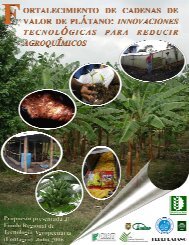Proyecto Resistencia enfermedades cebada - FONTAGRO
Proyecto Resistencia enfermedades cebada - FONTAGRO
Proyecto Resistencia enfermedades cebada - FONTAGRO
You also want an ePaper? Increase the reach of your titles
YUMPU automatically turns print PDFs into web optimized ePapers that Google loves.
Estudios<br />
Curriculum vitae Gisella ORJEDA<br />
1990 – 1995. PhD. Universidad de Birmingham, Birmingham, Reino Unido. Tesis: Manipulación de ploidía para el mejoramiento del<br />
camote y estudios genéticos Supervisor Dr. Michael Lawrence.<br />
1988 –1989. M.Sc Universidad Nacional Agraria "La Molina", Lima, Perú. Tesis: Desarrollo de híbridos interespecíficos<br />
tetraploides entre Ipomoea batatas Lam. (2n =2x=90) e I.trifida (H.B.K. ) G. Don. (2n=2x=30) como probadores de especies silvestres<br />
diploides y tetraploides. Aprobada con sobresaliente.<br />
1981 –1987. B.Sc. y título de Biólogo, Universidad Nacional Agraria "La Molina" Lima, Perú. Facultad de Ciencias, Biología.<br />
Orientación en Genética Cuarto superior, aprobada con Excelente.<br />
Experiencia Profesional<br />
Profesor asociado Enero del 2005-al presente. Universidad Peruana Cayetano Heredia. Jefe de la Unidad de Genómica. Facultad de<br />
Ciencias y Filosofia. Lima, Perú.<br />
2002 –final 2004 INRA- Unité de Recherche en Génomique végétale. Evry, France. Trabajo en el laboratorio de clonamiento<br />
posicional. En el equipo de Abdel Bendahmane haciendo el clonamiento posicional de un gen recesivo.<br />
2000 al 2002 Genoscope. Centre National de Séquençag e. Evry, Francia.<br />
Científico en Mejoramiento Genético y Evaluación 1996-2000 La Red Internacional para el Mejoramiento de la Banano y el Plátano<br />
(INIBAP/IPGRI), Montpellier, Francia.<br />
Científico Post-doctoral Sep.1995 –Abril 1996 Centro Internacional de la Papa (CIP) Lima, Perú.<br />
Asistente de Investigación 1986 –1989. Centro Internacional de la Papa (CIP) Lima, Perú.<br />
Enseñanza<br />
Plant Genetic Diversity and Molecular Marker Assisted Breeding Instituto de Investigaciones Agropecuarias (INIA), La Platina,<br />
Santiago de Chile ; 3 – 21 Octubre 2005.<br />
Profesora de los cursos de genetica, bioquimica de la facultad de ciencias, Universidad Peruana Cayetano Heredia.<br />
Organizadora principal y profesora en el curso “ EMBO Practical Course in Bioinformatics, Data Mining and Analysis of Genome<br />
Sequence Data. 3-15 Noviembre del 2003 Universidad Peruana Cayetano Heredia. Lima Perú.<br />
Profesora del curso práctico de genética vegetal dirigido a estudiantes del tercer año de Universidad : 2001, Universidad de<br />
Evry, Francia : Curso de Genética Vegetal. Profesor Dr. Francis Quetier (Director adjunto Genoscope).<br />
Publicaciones<br />
G. Orjeda, R. Freyre y M. Iwanaga. 1989. Production of 2n pollen in diploid Ipomoea trifida a putative wild ancestor of sweet potato.<br />
Journal of Heredity. 81:462 -467.<br />
R. Freyre, M. Iwanaga y G. Orjeda. 1990. Utilization of Ipomoea trifida germplasm for sweet potato improvement. 1. Development of<br />
synthetic hexaploids of I. trifida (H.B.K.) G. Don. by ploidy level manipulations. Genome. 34:201-208<br />
M. Iwanaga, R. Freyre y G. Orjeda. 1990. Utilization of Ipomoea trifida germplasm for sweet potato improvement. 2. Fertility of<br />
synthetic 6x clones and triploids with 2n gametes of I. trifida (H.B.K.) G. Don, and their interspecific crossability with sweet potato.<br />
Genome. 34:209 -214.<br />
G. Orjeda, M. Iwanaga y R. Freyre. 1991. Use of Ipomoea trifida germplasm for sweet potato improvement. 3. Development of 4x<br />
interspecific hybrids between Ipomoea batatas (L.) (2n=6x =90) and I. trifida (H.B.K.) G. Don. (2n=2x=30) as storage root initiators for<br />
wild species. Theoretical and Applied Genetics. 83:159-163.<br />
G. Orjeda, M. Iwanaga y R. Freyre. 1992. Use of Ipomoea trifida germplasm for sweet potato improvement. 4. Evaluation of storage<br />
root initiators. Proceedings of the Conferen ce Sweet Potato Technology for the 21st Century. Tuskegee, Alabama, U.S.A. 2-6 June,<br />
1991.<br />
J. Mont, M. Iwanaga, G. Orjeda y K. Watanabe. 1993. Abortion and determination of stages for embryo rescue in crosses between the<br />
sweet potato, Ipomoea batatas Lam. (2n=6x =90) and its wild relative, I. trifida (H.B.K.) G. Don. (2n=2x=30). Sexual Plant<br />
Reproduction. Vol. 6(3): 176-182.<br />
G. Orjeda, J.V. Escalant, N. Moore. 1999. The International Musa testing programme (IMTP) phase II. Overview of final report and<br />
summary of results. INFOMUSA. Vol 8. No 1.<br />
L. A. Becerra Lopez -Lavalle and G. Orjeda. 2002. Occurrence and Cytological Mechanism of 2n Pollen Formation in a Tetraploid<br />
Accession of Ipomoea batatas (Sweet Potato). Journal of Heredity. (93): 185 -192.<br />
International Rice Genome Sequencing Project. 2005. The map based sequence of the rice genome. Nature. Vol 436. pp793-800. G.<br />
Orjeda is uno de los autores (lista completa en el articulo)<br />
Mónica Morales*, Gisella Orjeda*, Cristina Nieto, Hans van Leeuwen, Amparo Monfort, Myriam Charpentier, Michel Caboche,<br />
Pere Arús, Pere Puigdomènech, Miguel A. Aranda, Catherine Dogimont, Abdelhafid Bendahmane and Jordi Garcia-Mas. 2005.<br />
Physical map covering the Nsv locus that confers resistance to Melon necrotic spot virus in melon (Cucumis melo L.). Theoretical and<br />
Applied Genetics. Volume 111, Number 5 , Pages: 914 – 922. * igual primera autoría.




